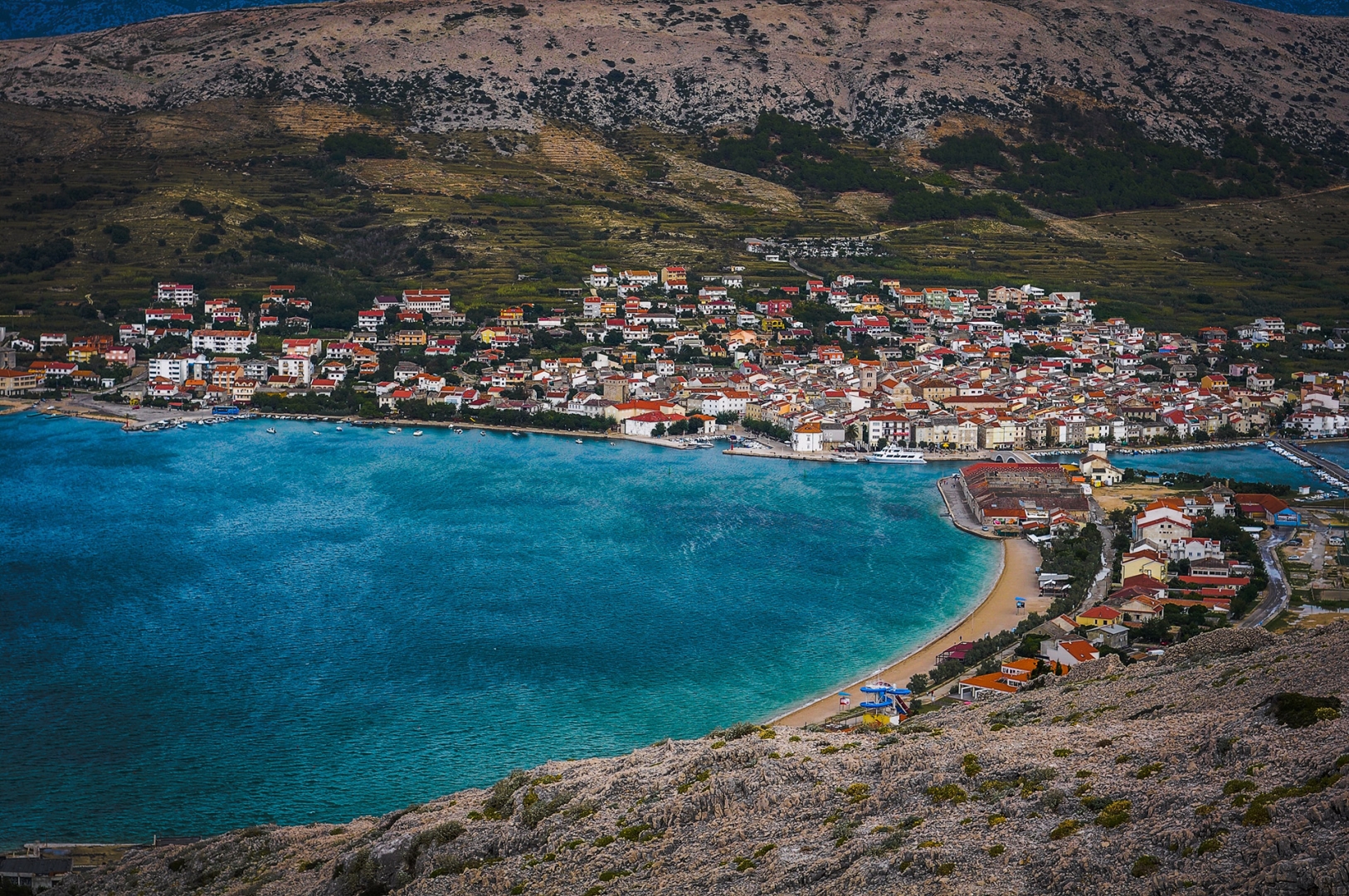
The island is known for its sparse coverage of vegetation in some parts, whose rocky landscape with aromatic herbs is often compared to the surface of the moon. Due to the position of the island under Velebit, from which strong storms blow all year round (especially in winter), the island of Pag is almost entirely covered with salt from the Velebit channel.
The island can be reached from the south side by a bridge, 340 m long, from the direction of Zadar, i.e. Posedarje, or by ferry to Žigljen in the north of the island from the port of Prizna.
The island of Pag is characterized by a unique stone landscape with many aromatic plants. It is these aromatic herbs that feed the Pag sheep, and together with the salt brought by the storm, they give flavor to the famous Pag cheese and lamb.
Pag cheese is a world-famous and appreciated cheese produced on the island of Pag. Cheese is produced from sheep's milk. In order to protect the originality of Pag cheese, the Association of Pag Cheese Producers was founded in 2005. It consists of all registered producers of Pag cheese on the island of Pag.
Pag lamb is one of Croatia's autochthonous products. In June 2015, it was registered in the register of protected marks of origin and protected marks of geographical origin.
A unique experience is also offered by a visit to the Lun olive groves, which are located near the town of Lun in the northwest of the Croatian island of Pag. It is bordered by dry walls, covers 400 hectares and contains about 80,000 olive trees. It is the largest olive grove in Croatia. In the olive grove, numerous unique wild and wild olives grow in a natural environment. The oldest trees are around 1,500 years old.
Pag abounds in beautiful beaches and interesting hiking trails with a view of Velebit and the surrounding islands.
We definitely recommend exploring the rich cultural and historical heritage of the island of Pag.
Copyright © 2024. Focis real estate, All rights reserved
Web by: NEON STUDIO Powered by: NEKRETNINE1.PRO
This website uses cookies and similar technologies to give you the very best user experience, including to personalise advertising and content. By clicking 'Accept', you accept all cookies.





